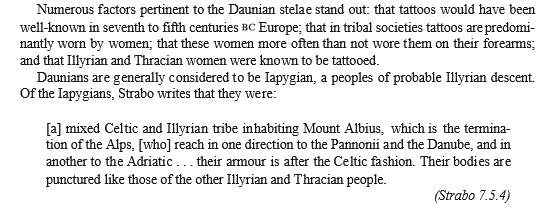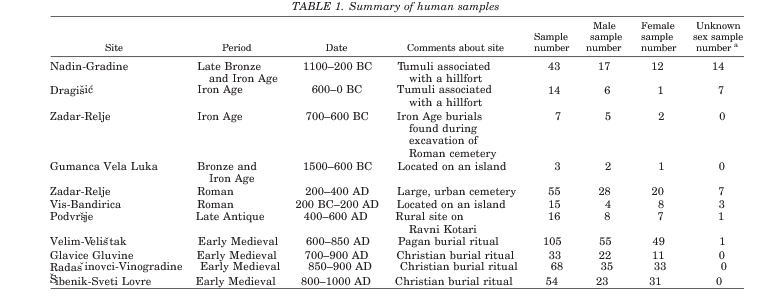torzio
Regular Member
- Messages
- 3,969
- Reaction score
- 1,234
- Points
- 113
- Location
- Eastern Australia
- Ethnic group
- North East Italian
- Y-DNA haplogroup
- T1a2 - SK1480
- mtDNA haplogroup
- H95a
Follow along with the video below to see how to install our site as a web app on your home screen.

Note: This feature currently requires accessing the site using the built-in Safari browser.
thanks for sharing
y dna ( again no e1b1b not even european e-v13 )
ORD004- r1b-m269
ORD011-r1b-p312
SGR002-r1b-m269
ORD014-j2b2 -L283
SAL001-J2B -M241
SAL010-J2B M241
ORD019-I2D-Z2093
SAL011-I2D-M223
SGR001-I1-M253
regions of samples :
https://i.imgur.com/qcE4MDR.png
Yeah, very interesting, so it looks the original Daunians/Messapians/Iapyges were J2b2-L283 and R1b-M269.
As for E-V13 not being found, it's more and more clear it's related with the cremation burials introduction in Balkans, so partial Illyrians who practiced cremation on a pyre, Thracians, and probably many of those E-V13 Z5018 in Apuglia is of Greek origin with some being recent Albanian migration.
very likely
at the moment
the source must be anicent greek colonies
p.s
let us wait for the anicent campanian dna paper i predict there would be some
e-v13 but i might be wrong

Nice Find Torzio. Very interesting paper.
Salento might find some relatives among the sample.
It’s very possible
… the Dauni are geographically closer to Jovialis, … I’m from the Messapii area of Puglia, though the Iapygians (Dauni, Peucetii and Messapi) all spoke Messapico (supposedly).
thanks for sharing
y dna ( again no e1b1b not even european e-v13 )
ORD004- r1b-m269
ORD011-r1b-p312
SGR002-r1b-m269
ORD014-j2b2 -L283
SAL001-J2B -M241
SAL010-J2B M241
ORD019-I2D-Z2093
SAL011-I2D-M223
SGR001-I1-M253
regions of samples :
https://i.imgur.com/qcE4MDR.png
It’s very possible
… the Dauni are geographically closer to Jovialis, … I’m from the Messapii area of Puglia, though the Iapygians (Dauni, Peucetii and Messapi) all spoke Messapico (supposedly).


This thread has been viewed 147531 times.
